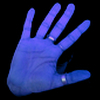Designer, themer
Drupal for Museums
Submitted by farriss on Wed, 07/09/2008 - 21:26.Session recording
Overview
Drupal is increasingly making a place for itself among museums around the world. As a strong and flexible framework Drupal can be a good fit for these sorts of organizations.
This session will be a case study and lessons learned from two museum web sites Palantir has built using Druapl 5: The Indianapolis Museum of Art and the Art Institute of Chicago. Both sites offered a number of unique challenges but also the opportunity to share amazing and diverse content.
Agenda
* Bringing Drupal into a large, established web presence
* Designing a modern site that still has a strong artistic feel
* Bridging Drupal to legacy multimedia databases, such as museum collection databases
* Drupal as an application framework
* Existing open source museum tools
Goals
We hope to present both the challenges and rewards of integrating Drupal with large, established systems such as those of museums. We also hope to give some insight into how to bend Drupal farther than you ever thought possible.
Resources
Indianapolis Museum of Art: http://imamuseum.org/
IMA Drupal.org Showcase: http://drupal.org/node/188312
Art Institute of Chicago Collections: http://www.artic.edu/aic/collections/
AIC Drupal.org Showcase: http://drupal.org/node/279485
- 2 comments
- 23 points
Building Facebook Applications using Drupal
Submitted by Dave Cohen on Mon, 07/07/2008 - 20:05.Session recording
Overview
The Facebook Platform allows anyone to create applications which tightly integrate with the Facebook.com website. These Applications can write content to a Facebook user's Profile, News Feed, and also Canvas Pages. This content can be as rich and complex as any website, so Drupal is a natural choice for developing on this platform.
This session will introduce the Drupal for Facebook project, and the best ways to use it. We will include a demo of one or more live Facebook Applications powered by Drupal and show some of the basic configuration behind them. And we'll discuss some of the differences of developing for Canvas Pages versus regular web pages.
Agenda
* Brief introduction to the Facebook API
* Brief introduction to Drupal for Facebook
* Demo of live Facebook Application
* Behind the scenes configuration of that Application
* Canvas Pages (FBML) vs. HTML
* Question and Answer
Goals
This session will give a basic understanding of the Facebook Platform for those new to it. We'll talk about why one might make a Facebook Application a part of a Drupal-powered website; or why one might build a Facebook App from scratch using Drupal.
We'll also demonstrate how the Drupal for Facebook modules work. Those familiar with Drupal will leave with a sense of how easy (or difficult) it will be to configure one of these applications.
Resources
* Facebook Platform
* Drupal for Facebook project
* Drupal for Facebook canvas pages
* Drupal for Facebook HTML pages
- 4 comments
- 31 points
Page serving and rendering (XHTML/XML/JSON, etc.) - now and Drupal 7
Submitted by pwolanin on Thu, 07/03/2008 - 23:29.Session recording
Overview
This session will discuss how Drupal finds and renders pages. In other words, how a Drupal path (like node/4) is used to deliver a page to your screen. This will be a high level discussion, but with some reference to implementation details.
Agenda
- Overview of the menu system architecture
- The flow from request to page rendering in Drupal 6
- Page rendering in Drupal 7
- Alternative page renderers - e.g. XML and JSON
- What we've enabled, what's left to do
Goals
This session should give the participant an overview of how these central Drupal systems work in Drupal 6, and how they may change in Drupal 7. We will focus on how page rendering may change, and what other advances those changes enable.
Resources
It would be helpful to have a basic familiarity with how pages are defined using Drupal 6 hook_menu, and what a Drupal path is.
- Login to post comments
- 45 points
Usability enhancements for Drupal hierarchies (menu links and taxonomy)
Submitted by pwolanin on Thu, 07/03/2008 - 22:41.Overview
The navigation menu, breadcrumb links, primary links, etc are important for users to be able to navigate your site. Is the way they work in Drupal 6 optimal for usability? Are there better default behaviors we could build for Drupal 7? Could we better accommodate non-standard browsers (e.g. screenreaders)
Agenda
* Fixes up to now (e.g. http://drupal.org/node/270917)
* Default markup
* Your suggestions and input!
Goals
This session will focus on Drupal core, not on contributed modules which can alter or enhance the built-in menus and taxonomy.
By identifying usability problems and possible fixes, this session will hopefully result in some fixes being identified to be addressed in core.
Resources
You should have used a Drupal 6 installation and thought about how you navigate using menus and taxonomy, and how you arrange or assign menu links and taxonomy terms.
If possible, think about "scalable menu parent choosers" and hierarchical select widgets. See: http://drupal.org/node/191360
- 1 comment
- 23 points
Dos and Don'ts for Designing in Drupal
Submitted by demet on Thu, 07/03/2008 - 00:25.Session recording
Overview
This session will focus on strategic tips and tricks for creating visually stunning and highly functional Drupal sites in collaboration with creative partners and colleagues. We will discuss various dos and don’ts associated with designing for Drupal and building custom Drupal themes.
Agenda
* What best practices should you follow when designing for Drupal or building Drupal themes?
* How to communicate with in-house and external design teams when building sites in Drupal
* What’s a good process workflow for building Drupal themes?
* What things can you do to make your life easier when developing Drupal sites? What things will make your life more difficult?
Goals
The goal of this session will be to help people involved in Drupal theme development and/or creating designs for Drupal sites understand the unique challenges of the system and learn how to develop a good workflow and set of best practices that will enable them to create sites that work and look their very best.
- 2 comments
- 84 points
State of Drupal
Submitted by Dries on Wed, 07/02/2008 - 09:47.Session recording
An update on the State of Drupal.
- 3 comments
- 113 points
Redesign of Drupal.org from the designers
Submitted by Mark Boulton on Wed, 07/02/2008 - 06:07.Session recording
Overview
The design firm that will be selected by the Drupal association will be selected and invited to present at Druaplcon Szeged. This session will explain their design concepts and processes for involving the Drupal community in the design process.
Agenda
* Update on the design process
* Presentation on the design firm
* How the designers will engage the Drupal community
* Presentation of the UX Toolkit for Drupal.org
Goals
The purpose of this session is for the designers to meet the Drupal community and the community to meet the designers. The goal is for the designers to help transfer ideas about the ongoing design improvements for Drupal.org to the community.
Resources
The RFP for Drupal.org redesign. The results of the UX toolkit, and other inputs shared with the design firm.
- 2 comments
- 76 points
A gentle introduction to Drupal coding
Submitted by add1sun on Wed, 07/02/2008 - 04:24.Session recording
Overview
This session is made for folks that are new to coding in general or new to Drupal coding in particular. We'll start off with some basic discussion about working with Drupal as a framework and what that even means. Then we will go through an overview of how Drupal's framework is set up and the various APIs and systems you can work with. This is specifically targeted at people who do not know what FAPI or a "hook" is and are trying to wrap their head around these new concepts. We'll finish up with community resources to help you on your coding journey. The only prerequisite is a curious mind. You don't have to be a l33t hax0r.
Topics to be covered
- How is coding with Drupal different from plain PHP/MySQL?
- Overview of Drupal code base
- What is a hook?
- What is the theme system?
- What is FAPI?
- What is the menu system?
- What about database stuff?
- Coding standards
- Security
- How to learn/get help
Goals
Give people a strong foundation in Drupal concepts from a code perspective as well as pointers to good resources for continued learning.
- 1 comment
- 35 points
Imagefield Gallery -- A path to easy galleries in Drupal
Submitted by EclipseGc on Tue, 07/01/2008 - 00:48.Overview:
Imagefield Gallery is a module that's been around since shortly before Drupalcon Boston. I created it with the intent of making gallery management for an existing site easy for single nodes. Since that time others have used it for their own sites, and have extended it to work with proprietary gallery types that have not been contributed back. I would like very much to introduce the drupal community at large to imagefield gallery and encourage them to help develop it in a direction that could be beneficial for ALL of drupal, not just a small subset.
As stated above, imagefield gallery's primary purpose is to create galleries on a node from an existing imagefield. The new 2.x version cleans up the admin, and is striving to squash some old bugs, and add new features. In development is the ability to do node references, as well as a new gallery type. Imagefield Gallery makes creating new gallery types pretty easy and straight-forward. These gallery types are re-usable in a large number of instances and allow the site administrator to customize gallery types per content type.
Agenda
- Current Capabilities
- What I'd like to see donated by the community
- What about D6?
- What could the future hold?
Goals
Ultimately the objective of this session is to introduce Drupal at large to the Imagefield Gallery module, and show them what it can do for them. With some help I believe imagefield gallery can fill a significant void in the current Drupal codescape and give Drupal a varied and significant gallery system upon which to draw.
Resources
Project Page:
http://drupal.org/project/imagefield_gallery
Development/News Blog:
http://www.worxco.com/blog-categories/imagefieldgallery
- Login to post comments
- 28 points
Summer of Code Showcase
Submitted by webchick on Sat, 06/21/2008 - 15:15.Session recording
Overview
This session will show off the results of Drupal's Google Summer of Code 2008 projects. Students who make it to Drupalcon will be demoing their own projects, and we'll also show off projects from the students who can't be there.
Agenda
The following projects will be shown during the course of the session, as time permits.
- Apache Solr Improvements
- New Aggregator for Drupal core
- Bookings API
- Charts module Views integration
- Color module improvements
- Document Import Module
- Embed Widgets
- Revamped Help system
- Icon module
- Image manipulation GUI
- Memetracker
- New nodequeue sub-modules
- OAuth/Services module integration
- Open ID Attribute Exchange
- PluginManager
- Core search improvements
- Security scanner
- Usability Suite
- Validation API
- Version Control API / Project module integration
- Views datasources
Goals
This session will allow Summer of Code students to show off their hard work, and for the Drupal community to get a first-hand look at all the cool stuff that was produced over the summer. Summer of Code students typically make excellent employees as well, for those looking to hire. ;)
---
NOTE TO ORGANIZERS: I put down "90 minutes" because that'd be a much more comfortable time frame during which to show off 21 projects. But every other year we've managed to do it in 60, so if 90 minute slots are short, you can push the time allotment back.
- 5 comments
- 37 points


 Current Conditions:
Current Conditions: Stay informed with the
Stay informed with the 








